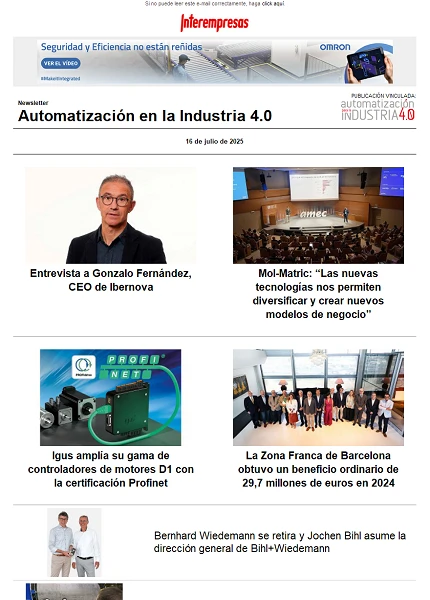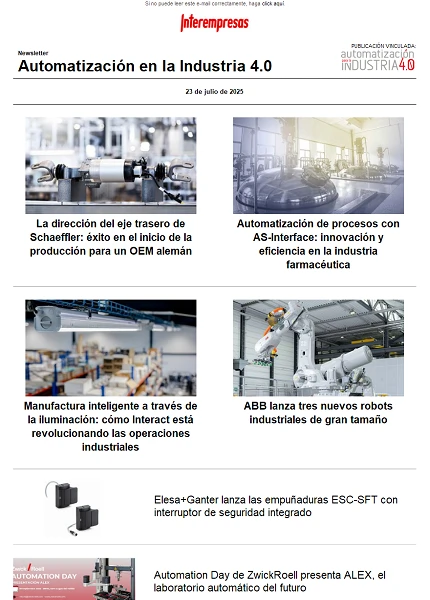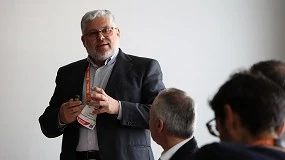Soluciones escalables para el diseño de sistemas de control por lotes
Cuando la ISA (Sociedad para los Sistemas de Instrumentación y la Automatización, por sus iniciales en inglés) definió la norma ANSI/ISA-S88-01-1995 hace más de diez años, creó un lenguaje y unos modelos comunes para el diseño y la especificación de los sistemas de control para el procesamiento por lotes. Para los fabricantes de maquinaria, ya sometidos a las presiones habituales para que suministren máquinas más flexibles, más rápidamente y con menores costes, la norma presagiaba una notable reducción de la complejidad en el diseño de sistemas.
Conocida hoy en día simplemente como S88, la norma ANSI/ISA-S88.01-1995, su equivalente en la Comisión Internacional de Electrotécnica (IEC 61512-01) y las posteriores ampliaciones de la norma han allanado el camino para que los fabricantes de maquinaria puedan hacer un uso óptimo de los sistemas modulares con el fin de reducir los costes. Además, han eliminado la necesidad de escribir código personalizado para cada aplicación, reduciendo así los plazos de desarrollo, y han permitido la reutilización del código escrito para un sistema en sistemas posteriores, con independencia de la escala y la complejidad.
Por lo tanto, los fabricantes de maquinaria se benefician de una reducción de los plazos de comercialización gracias a los equipos estandarizados, las reutilizaciones eficaces del código, los controles escalables y las plataformas de información procedentes de redes de distribución de primera fila.
Creada en 1995, la norma trazó el camino a seguir en el desarrollo de sistemas de control por lotes (batch), definiendo modelos y terminología para la planta física, procedimientos y fórmulas de un proceso por lotes. La norma ha evolucionado con los años: En 2001 se publicó ANSI/ISA-88.00.02-2001, que trata sobre la estructura de los datos y las directrices para los lenguajes, y en 2004 vio la luz ANSI/ISA-88.00.03-2004, que trata de los modelos y representaciones de fórmulas generales y de plantas.
Además, de la norma S88 derivó la S95 para la integración de sistemas de control empresarial, que definía una terminología común para la descripción y comprensión de la información sobre fabricación en una empresa. También define el intercambio de información entre las funciones de control de fabricación y otras funciones de la empresa, incluidos los modelos de datos y las funciones de intercambio.
Entonces, ¿qué implica exactamente para los fabricantes de maquinaria trabajar para las industrias de transformación? El objetivo de los equipos de control por lotes para la industria de transformación es ser capaz de fabricar muchos productos con el mismo equipo, o llevar a cabo diferentes operaciones en el mismo producto, sin necesidad de realizar grandes reconfiguraciones manuales del equipo de producción y sin tener que reescribir el software de control por lotes, una tarea potencialmente costosa y que lleva tiempo.
El modelo S88 de planta física define el equipo en función de celdas de proceso. Cada una de ellas contiene el equipo necesario para la producción de uno o más lotes. Una celda de proceso se compone de todas las unidades: conjuntos de equipos de proceso, equipos de control y la lógica de control asociada que realiza las actividades de procesamiento.
Las capacidades básicas de procesamiento de la unidad pueden definirse mediante «módulos de equipo» y estos definen qué puede hacer una fórmula a la unidad, generalmente acciones como incorporaciones de material, transferencias de material, calentar o enfriar un recipiente, presurizar un recipiente y mezclar materiales en un recipiente. La norma S88 desglosa aún más los módulos de equipo en módulos de control, que son una combinación de la lógica básica de control y los diversos sensores y accionadores dentro de la unidad.
El efecto de todo ello es definir la gestión de las fórmulas jerárquicas y los marcos de segmentación de procesos que materializan el objetivo de separar los productos en fabricación de los equipos que los fabrican, y así permitir a los fabricantes disfrutar de importantes mejoras de la productividad.
Se puede usar el mismo equipo para fabricar múltiples productos o para realizar diferentes operaciones en un producto dado, con un desarrollo y despliegue sencillo de la fórmula y sin necesidad de contar con ingenieros especializados en sistemas de control.
Esto reduce de forma efectiva el coste total del diseño, desarrollo y suministro a través de una menor intervención de la ingeniería de proyectos (diseño, programación, cableado, ensayos, instalación, asistencia técnica), un ahorro de energía escalable y modular y sistemas abiertos de control e información de automatización.
Obviamente, una cosa es tener un modelo viable para desarrollar sistemas y equipos modulares de control por lotes, y otra contar con las herramientas físicas para convertir ese modelo en sistemas tangibles. Las aplicaciones informáticas basadas en S88 existen desde hace casi tanto tiempo como la propia norma, pero no siempre estas funciones han estado disponibles en autómatas «llave en mano».
Sin embargo, el panorama está cambiando gracias a una nueva familia de controladores con funciones S88 integradas que permiten adoptar una metodología de diseño modular. Estos equipos están dando un nuevo impulso al diseño de máquinas y dispositivos compatibles con S88.
Estos productos están tipificados por la plataforma RSLogix 5000 de Rockwell Automation con PhaseManager. PhaseManager es una función que se ha incorporado al software de programación RSLogix 5000 y que introduce código S88 en todos los controladores de la familia Logix para ofrecer un marco normalizado para configurar y secuenciar la lógica de estado de fase directamente en el controlador o utilizando FactoryTalk Batch de Rockwell Automation. Esta función ejecuta fases basadas en datos y estructuras de control S88 y PackML. Estas estructuras predefinidas encapsulan código PLI (Phase Logic Interface) complejo y, por lo tanto, ahorran tiempo de programación y dinero.
Las fases se pueden secuenciar rápidamente con FactoryTalk Batch o directamente en el controlador Logix utilizando rutinas SFC (Sequential Function Chart), y se pueden visualizar en un monitor de fase incorporado que ayuda a probar y reparar las fases durante la puesta en marcha y el mantenimiento.
Como PhaseManager está integrado de serie en los controladores de Rockwell Automation, los conocimientos que se adquieran con una máquina pueden aplicarse fácilmente a la siguiente. Además, como el software de ingeniería es homogéneo en toda la familia de controladores Logix, el código desarrollado para una aplicación puede ser reutilizado fácilmente en muchas otras aplicaciones. Del mismo modo que la S88 define un concepto modular que es escalable a través de diferentes niveles de complejidad, el hardware de Rockwell Automation es escalable a través de diferentes niveles de complejidad y diferentes tamaños de máquina.
El resultado es que los fabricantes de maquinaria pueden reducir espectacularmente los plazos de diseño de sistemas y suministrar soluciones de mayor capacidad y flexibilidad a los clientes con mayor rapidez. Al no tener que confiar en software y hardware personalizado, los costes del proceso de desarrollo se reducen drásticamente y las aplicaciones posteriores son más fáciles y rápidas de implantar.
En resumen, la S88 redefinió la forma en que se podían construir sistemas de control por lotes haciendo posible un enfoque modular del diseño de sistemas. Sin embargo, lo que de verdad ha hecho posible la materialización de los objetivos de la S88 es la llegada de herramientas informáticas estándar combinadas con equipos estándar, escalables y «llave en mano». Los fabricantes de maquinaria tienen por fin las herramientas que necesitan para construir sistemas de control por lotes de cualquier tamaño y nivel de complejidad para cualquier sector, de forma rápida y rentable.








